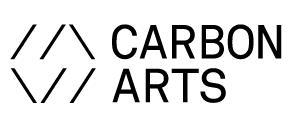Perceptive Power: Cultural Perspectives on a Changing World
Author Jodi Newcombe
Perceptive Power examines the complex and sometimes uneasy relationship between the artist and industry within the context of what is described as the ‘third industrial revolution’. Coined by economist and social theorist, Jeremy Rifkin, in his 2011 book of the same name, this term describes a state of affairs driven by the convergence of new communication technologies with distributed and renewable energy production, paving the way for a sustainable, circular and collaborative economy. What role does the artist play in this societal transformation?
Spanning industry-funded public art that lauds technological progress, to activist performances questioning the status quo, the work in Perceptive Power seeks to shift our perspective, enhance our powers of perception and catalyse action. But do these different relationships between artists and their commercial partners affect the ability of these works to bring about change? At what point does an environmental artwork become a work of design shaped by a particular agenda and how much does this distinction actually matter?
Melbourne-based artists Ash Keating and Keith Deverell examine new energy regimes in large- scale video installations. Distributed, local power generation at Melbourne Airport is the subject of Deverell’s TriGen, a work that seeks a nuanced appreciation of the merits of this low-carbon solution. In Keating’s Continuum (Parts One and Two) Victorian solar and wind farms take on a human dimension, at times playful and poetic, creating a song of timeless hope about humanity’s future.
Sydney-based artists Joyce Hinterding and David Haines, and Paris-based collective HeHe (Helen Evans and Heiko Hansen) seek to amplify and reveal the shortcomings of existing fossil- fuel based regimes, such as individualistic car cultures (Toy Emissions, HeHe), consumerism and excessive waste (Nuage Vert, HeHe) and the highly inefficient transportation of centralised energy production (Encounter with the Halo Field, Haines and Hinterding).
With a focus on video and sound art, Perceptive Power also articulates the unique ability of these mediums to combine data representation and narrative as new ways of seeing and questioning our relationship with the invisible forces that power our economy. In Building Run Deverell combines computer programming and documentary form to translate data into visual narrative, as energy consumption becomes human exertion; in TriGen carbon emissions are discarded as dangerous airport luggage. HeHe, Keating and Haines & Hinterding literally ‘perform’ our industrial infrastructure, revealing hidden realities and projecting possible futures. In these instances video art serves to interpret a performance, extending its life and reach.
Throughout the exhibition, we are reminded of how rapidly our perceptions of industrial infrastructure and iconography change, influenced by political manoeuvring or by a romantic nostalgia. Nuage Vert [Green Cloud] plays with the aesthetics of the smokestack, once the symbol of progress for an industrial revolution, now an icon for pollution. HeHe’s use of the colour green also offers a double meaning – a synthetic fluorescent toxicity or the hope of a grassroots political movement. Deverell’s Natural State ponders the beauty of a natural landscape altered. Here a hydroelectric damn with its attractive heritage architecture is presented as a tranquil face that defies the memory of its drowned ecology. Finally, Continuum (Part One) draws playfully on conflicting modern views about wind farms – blight on the landscape or symbol of hope in the fight against climate change?
Whether by design or through heightened observation, the artists in this exhibition focus our gaze on the industrial promises of both the past and the future, challenging our perceptions of what constitutes beauty, horror, despair and hope. From the celebratory to the critical, these voices offer the nuanced perspectives essential to both understanding and facing the current ecological crisis.
Excerpt from the Perceptive Power catalogue.
